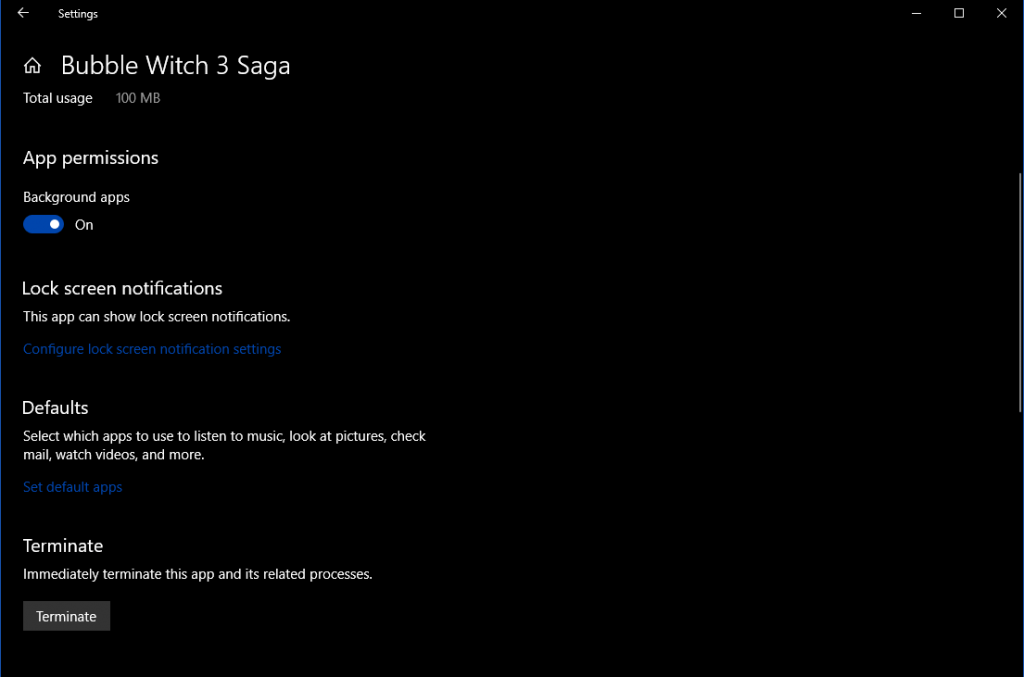Customizing App permissions mean to keep an eye on the activities of the app, what it is capturing such as location, photos, what it can access such as a microphone, camera or more. With all the privacy and protecting the content hype, we need to keep an app under scrutiny to know what apps are doing on our device.
Now you can manage app permissions on Windows 10 as well. However, this works only for the apps available on the Microsoft Store. Unfortunately, the old native apps of Windows can’t be controlled in this aspect.
In this post, we have listed ways in which you can control app permissions on Windows 10 Read on!
Methods To Control App Permissions on Windows 10
To customize the permissions of an app, go to the application’s detail window. There are various methods to control app permissions on Windows 10:
Method 1: Go to the Start button, locate the app’s shortcut icon or tile. Right click on it and from the context menu, choose More, then click App Settings.

 Ways To Force Change Password On Windows 10Windows 10 offers many security features, out of which, one feature offers users to force change password on Windows 10....
Ways To Force Change Password On Windows 10Windows 10 offers many security features, out of which, one feature offers users to force change password on Windows 10....Method 2: Press Windows and I key together to open Settings page on Windows. On the Settings page, go to Apps. Now on the app page, click on Apps & Features. From the list of apps installed, choose the app you want, click “Advanced Options”


You can scroll down to the App permissions section. There you will get the options to toggle on or off to the features or apps that an app can access. Toggle to the right side to enable and to the left side to disable.
Note: In case, you are not able to see what permissions an app asks for, this means you can’t control any permissions for the app. It might be a modern app with no permission needed or an old app with no control over.

 How to Manage Startup Programs in Windows 10Is your Windows 10 taking too long to start? Are you tired of waiting for your system to finally boot...
How to Manage Startup Programs in Windows 10Is your Windows 10 taking too long to start? Are you tired of waiting for your system to finally boot...Customize According To The Categories of Permissions
The permissions for an app can be managed using category such as you can check which apps can access the Photos on your computer.
Follow these steps to customize permission via category:
Step 1: Press Windows and I key together to open Settings.
Step 2: On Security window, navigate to Privacy.

Step 3: On the Privacy window, go to App Permissions located on the left-hand side panel. Navigate to the app permissions that you want to see and make changes to. The given options are Location, Microphone, Camera, Notifications, Radios, Videos, Tasks, Contacts, Call history, Messaging Account info, Calendar, Background apps, Email, File System, Documents, Automatic File Downloads, Pictures, App diagnostics, and Other devices.

Step 4: Let’s say you want to check permissions for Pictures. On Pictures, under “Choose which apps can access your pictures library,” check the list of apps which have access to the category and manage accordingly.
 How To View Disk Space Use In Windows...Do you know how to view disk space use in Windows 10? If no, then don’t worry! This article allows...
How To View Disk Space Use In Windows...Do you know how to view disk space use in Windows 10? If no, then don’t worry! This article allows...Each of the categories comes with the information related to permission and what it does and also gives you the reasons why you want to turn off the permission access for a certain application.
When you use an application at first it asks for a permission to access a certain category such as Pictures, Camera, Location or other. It will send out a prompt asking you to either deny or allow permission to access. You can choose whether you want to deny or allow. However, you can change the permission whenever you like.
In this post, we can keep a check on Modern Apps’ Permissions on Windows 10. Now control app permissions on Windows 10 and let us know if you face any issues in the comments section below.


 Subscribe Now & Never Miss The Latest Tech Updates!
Subscribe Now & Never Miss The Latest Tech Updates!